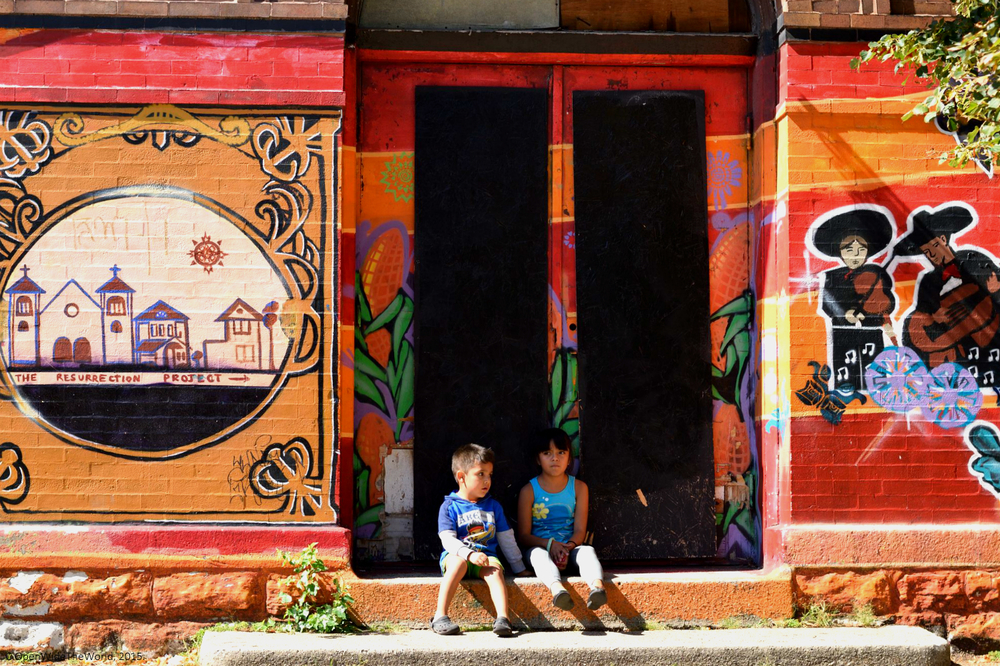 |
| The Heart of Chicago |
Chapter 13 discusses the phenomena's of subcultures: groups of individuals, within a larger group, who have a shared sense of identity, beliefs, and values.
One of the richest subcultures in Chicago resides in the working class Pilsen neighborhood of the lower southwest side of the city. Formally dominated by European immigrants (primarily from Czech), the late 1960s saw an influx of Mexican immigrants enter the neighboring area after loosing much of their residency to what is currently the University Village/University of Illinois in Chicago campus. This peaked in the 1980s, and would become a cultural landmark for the city.
Merging Mexican traditions with the American lifestyle, the sons and daughters of these immigrants would form what would be known as the Chicano (and later Chicanx) subculture of the city (along with other neighborhoods such as Little Village). From foods to music to religious practices, they would embed themselves into this Heart of Chicago community and add their own unique flavor into the melting pot of the city.
And while the neighborhood is ever-changing, it's interesting to note the lasting presence of its Mexican past and current resurgence of its culture by Millennial and Gen-X residents, taking up the mantle of their parents and grandparents and carrying on the traditions of old.
The hallmark of the neighborhood is it's art, displayed prominently on nearly every corner. Some of these pieces have been around for nearly 30 years.
Below we'll review a few pieces, most of which can still be found today.
Pilsen is home to the works of many Mexican-American artists. One of the most famous was Francisco Mendoza (1958-2012), known as the "Pilsen Picasso":
 |
| Francisco Mendoza outside of Orozco Academy, where he taught art for a number of years. |
 |
| Cooper, another school adorned with Francisco's art. |
The community is host to several art pieces and is famous for being dressed in dozens of murals, ranging from traditional pieces to graffiti works of art:
 |
| Casa Aztlan, a local community center, prior to being closed down. |
 |
| 18th Street Pink Line stop of the CTA. |
 |
| Resurrection Project, renovated with art. This piece was primarily done by local artist Delilah Salgado. |
 |
| Mariachi on the right... painted by me. |
 |
| Girl in blue... My sister. |
 |
| My dad and aunts are on the right hand side, below the man with red hair. |
 |
| 19th and Ashland |
Some of the signature themes of these works include Catholicism and immigration, often married together in pieces such as the ones above. Below we find a newer mural addressing immigration:
 |
| Near 18th and Blue Island |
There are even pieces attacking the current state of the neighborhood, which is going under gentrification:
 |
| Neocolonial concerns addressed on the streets. |
A few newer pieces:
 |
| Across Dvorak Park |
 |
| 18th and Wood |
Mexican-Americans are very fond of the Virgin Mary, who is the subject of several pieces throughout the neighborhood:
 |
| Located within Casa Aztlan |
Another woman who is widely respected and adored: Selena Quintanilla. Might as well grant her Chicanx Sainthood.
 |
| Located at Cooper Elementary. Done by Francisco Mendoza in the 90s. |








No comments:
Post a Comment